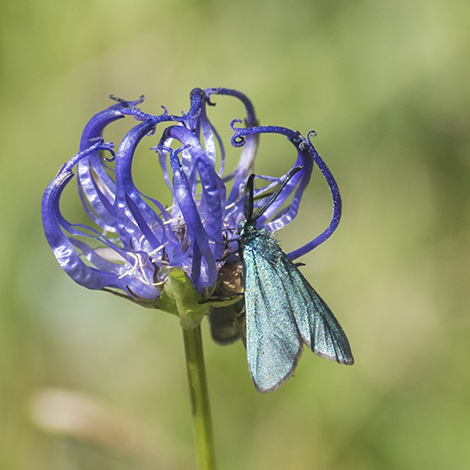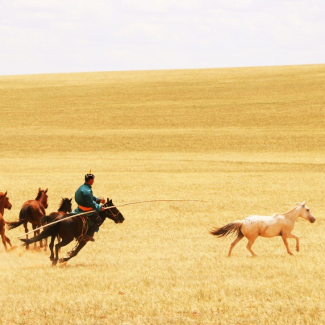
The great acceleration reaches new heights
An international team of researchers1 , including a CNRS researcher at the department of Écologie et Dynamique des Systèmes Anthropisés (CNRS / Université de Picardie Jules Verne) has observed an acceleration in the increase of biodiversity on mountain peaks in Europe. This is a new indicator of the “great acceleration”: an increasingly rapid inflation of different parameters around the world (glacier retreat, coral bleaching, etc.) seen in recent years as a result of climate change. Mountain ecosystems could be seriously disturbed as a result. Their findings appear in the 4th April 2018 edition of Nature.
- 1Including Damien Georges, researcher at the International Agency for Research on Cancer (IARC) and post-doctorate at Aarhus University in Denmark at the time of the study.
The acceleration of CO2 emissions in recent decades have caused many indicators, such as socio-economic, meteorological and biological ones, to race. The scientific community calls this phenomenon “the great acceleration”. In a new study, a team of researchers from 11 countries demonstrated that this acceleration is visible today in the most remote reaches of the planet: mountain summits. The scientists brought to light the increasingly rapid colonisation of these summits by lower-level flora.
The study looked at 302 peaks from different mountain ranges in Europe (Alps, Pyrenees, Carpathians, etc.). In 87% of these summits, plants benefited from increasingly mild weather conditions. This migration is also seen in species known for being bad or slow dispersers. The number of plant species colonising European mountain tops between 2007 and 2016 is thought to be five times superior to the amount seen between 1957 and 1966. Researchers also found this trend to be consistent with an increase in temperatures. They noted that other global factors such as nitrogen atmospheric deposition related to pollution, or the presence of humans on mountain summits, do not explain this acceleration.
Until now, no mountain top species has been observed to disappear, but cohabitation may not continue in the long term. Certain plants found on mountain peaks may eventually disappear, unable to migrate to higher altitudes or compete with more competitive lower-level species, leading to the risk of creating an imbalance in mountain ecosystems.

« Phyteuma hemisphaericum ».

« Androsace ciliata » et « Hutchinsia alpina » at the top of Punta Suelza (2972 m Pyrenees).
Accelerated increase in plant species richness on mountain summits is linked to warming. Manuel J. Steinbauer et al., Nature, 4 avril 2018. DOI: 10.1038/s41586-018-0005-6
View web site


